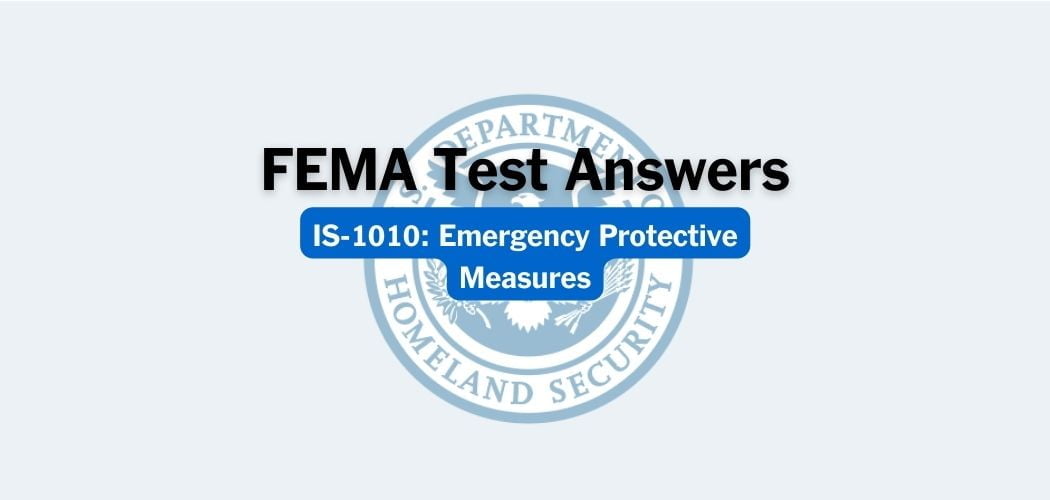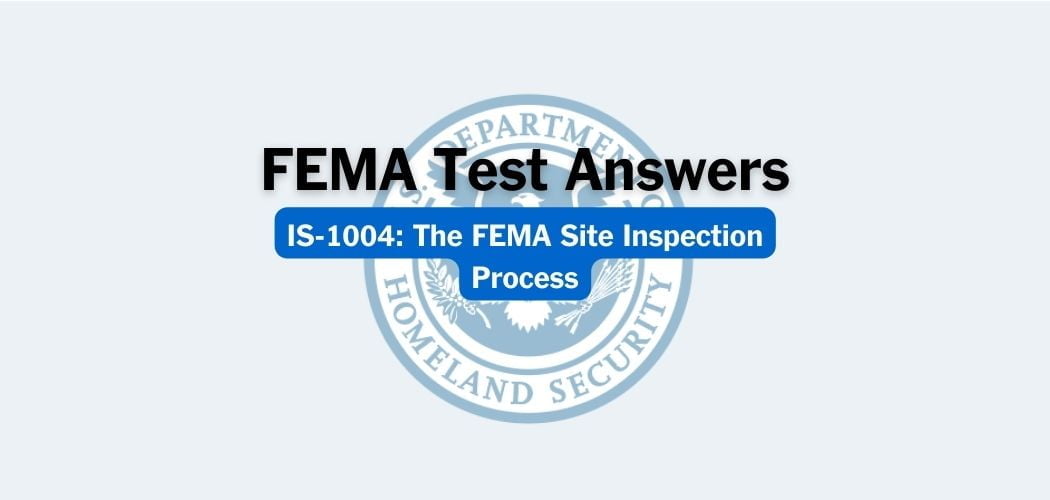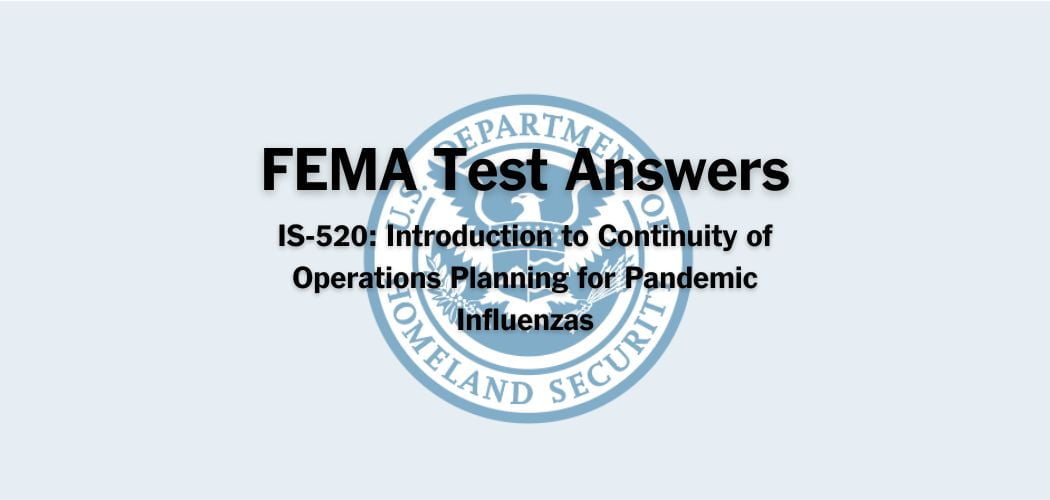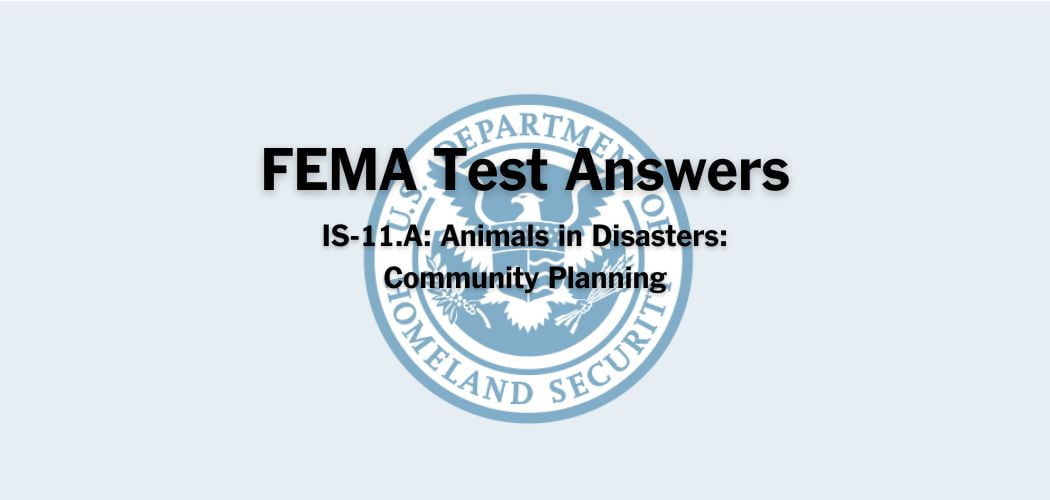Overview: The FEMA IS-337 course was published on 4/26/2021 to train participants to post financial transactions to the Integrated Financial Management Information System (IFMIS). Participants learn about transactions for the following: commitments, obligations, invoices, expenditures, reports, and more. Participants will view transaction demonstrations and be guided through questions to ensure their understanding of each transaction.
Primary audience: The IS-337 course is for all FEMA employees and FEMA-authorized contractors. The learner must achieve a minimum passing score of 75% on final knowledge assessments or demonstrate mastery on performance assessments or research assignments to earn the IACET CEU.
FEMA IS-337 test answers
Each time this test is loaded, you will receive a unique set of questions and answers. The test questions are scrambled to protect the integrity of the exam.
Question 1. Which of the following describes how IFMIS interfaces with other systems?
A. IFMIS allows for data to be shared between IFMIS subsystems and with other Agency systems✅
B. IFMIS allows for data to be shared between IFMIS subsystems but not with other Agency systems
C. IFMIS does not allow data to be shared between IFMIS subsystems, nor with other Agency systems
D. IFMIS allows for data to be shared with other Agency systems, but not between IFMIS subsystems
Question 2. The default for the Expiration and Performance (To:) date fields is:
A. The end of the fiscal year
B. The end of the calendar year
C. Six months from the current date/date of entry✅
D. The end of the following month (from the date of entry)
Question 3. After completing the data entry for the ACCS screen, you should:
A. Save the data entry✅
B. Verify the data entry
C. Copy the data entry
Question 4. An appropriation by Congress is either:
A. Direct or Indirect
B. Direct or Reimbursable
C. Reimbursable or Indirect
D. Reimbursable or Non-reimbursable✅
Question 5. In sequence (from highest to lowest), what are the steps in the “Funds Control Waterfall”? Allocation, Commitment, Obligation, __________, and Invoice/Expenditure
A. Receiving Report
B. Funding
C. Disbursement✅
D. Cost Posting
Question 6. What is the first step in the Payment Process?
A. Payment approval✅
B. Payment scheduling
C. Payment transaction posting
D. Payment confirmation
Question 7. When a Vendor or Employee File is deleted in IFMIS, it stays in the database in a/an __________ state.
A. Mobile
B. Inactive✅
C. Active
D. Functional
Question 8. When completing a vendor expenditure transaction, the status should be which of the following?
A. CLOSED
B. PAID
C. OPEN✅
D. SCHEDULED
Question 9. Which report lists a transaction-by-transaction detail of all data entry referencing a specific allocation?
A. Allocation History Report
B. Funds Disposition Report
C. Use of Funds History Report✅
D. Regional Allocated Authorized Funds Status
Question 10. What is the default Document (Doc) Type for a Commitment transaction?
A. OF347
B. Invoice
C. FF 146-0-1 (FF 60-3)
D. FF 146-0-2 (FF 40-1)✅
Question 11. Which four-character code identifies the category of expenditure for an action?
A. Program Code
B. Budget Object Class✅
C. Project Code
D. Organization Code
Question 12. When posting multiple ACCS lines where much of the data is the same, which steps can you take to eliminate re-keying duplicate data?
A. Use PREV and NEXT buttons and shortcut keys to copy/paste data✅
B. Click COPY, then NEXT
C. Click NEXT, then COPY
Question 13. The first distribution of apportioned funds within FEMA are:
A. Appropriations
B. Allotments
C. Allocations
D. Apportionments✅
Question 14. In order, the seven (7) fields that create the Account Classification Code Structure (ACCS) entry include: __________ – Fund Code – Program- Organization – Project – BOC (Budget Object class) – D/R.
A. Sequence Number✅
B. Budget Calendar Year (BCY)
C. Invoice Number
D. Budget Fiscal Year (BFY)
Question 15. Which of the five (5) major subsystems in IFMIS is used to record and maintain FEMA’s budgeted resource information?
A. Disbursements
B. Accounts Receivable
C. Funding
D. General Ledger✅
E. Cost Posting
Question 16. An allocation is what level of funding?
A. The working, or program, level of funding within FEMA✅
B. The headquarter level of funding within FEMA
C. The directorate level of funding within FEMA
Question 17. Employees are identified by which of the following?
A. Employee Identification Number✅
B. Social Security Number
C. Travel Authorization Number
D. Vendor Number
Question 18. Which entry is generated for the Transaction Code when you click VERIFY on the ACCS screen?
A. A system-generated code✅
B. The Obligation ID
C. The ACCS/line of accounting
D. A blank entry
Question 19. The five (5) major subsystems in IFMIS are Funding, Cost Posting, Disbursements, Accounts Receivable and:
A. General Ledger
B. Accounts Payable✅
C. Commitment
D. Obligation
Question 20. Which of the following statements is not correct regarding IFMIS reports?
A. You can download reports as a PDF file.
B. You can download reports as an Excel file.
C. You can download, save, and rename reports.
D. Reports open in a new tab or window.✅
Question 21. In the Commitment ID, W123456Y, the Y indicates:
A. The location code for the commitment✅
B. The document will be submitted for procurement
C. There are sufficient budgeted funds available
D. The document is approved
Question 22. In which step does IFMIS issue the payment to the Department of the Treasury?
A. Step 2: Approval of Payment Transaction
B. Step 1: Posting of Payment Transaction
C. Step 4: Payment Confirmation Process
D. Step 3: Payment Schedule Process✅
Question 23. To locate a menu option, or needed page, from the IFMIS Main Menu, you can click and expand folders and subfolders, or you can use the:
A. Actions: Toggle Console
B. Find a Menu Item text box✅
C. Lookup Feature
Question 24. After entering a Ref (reference number) and Ref Type (reference type), you will enter which field to populate the remaining ACCS fields?
A. Seq
B. Line
C. Customer Order
D. ACCS✅
Question 25. Which report would you run to list the obligations made against a commitment?
A. Funds Disposition Report
B. Paid Expenditures Report
C. Use of Funds History Report
D. Cross Reference Report✅
Question 26. Which transaction represents the liquidation of an obligation for payments made outside of IFMIS?
A. Obligation
B. Commitment
C. Vendor Expenditure
D. Vendor Invoice✅
Question 27. If you do not have a Vendor ID to enter in the Vendor field, you can generally use which of the following to enter information to help you filter data from the database and select the correct entry?
A. Tutorial
B. Help Assistant
C. Preview
D. Lookup Feature✅
Question 28. Generally, IFMIS reports fall into (2) classifications: Funding and:
A. Cost Posting
B. Obligations
C. Disbursements✅
D. Commitments
Question 29. Which folder would you select from the IFMIS Main Menu to set a network printer, report options, or view a report file?
A. User Maintenance
B. Main
C. Environmental Utilities✅
D. Utilities
Question 30. To place a form, record, or document on hold for processing later, you would click which button on the main screen?
A. HOLD✅
B. REVHOLD
C. SAVE
D. ADDR



